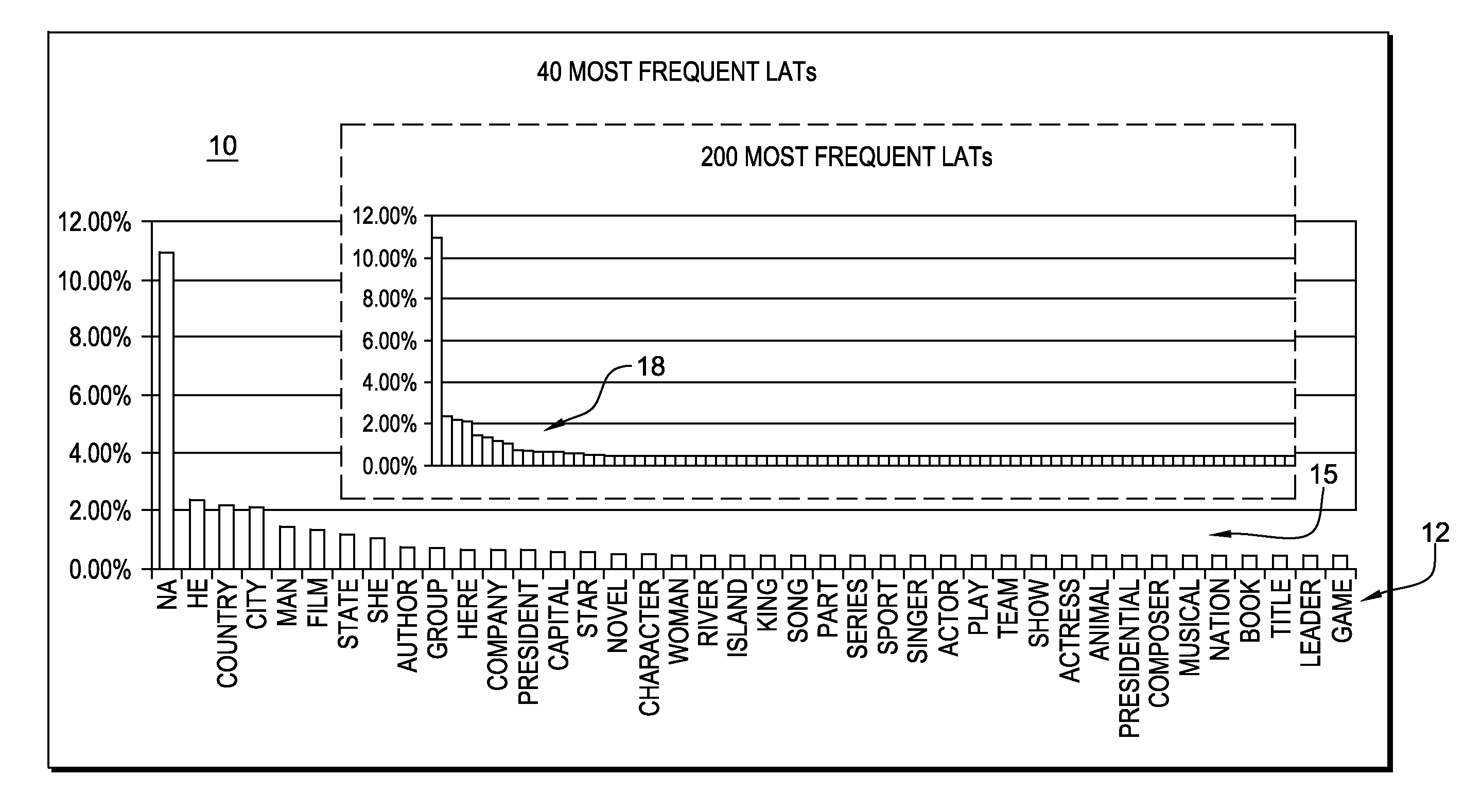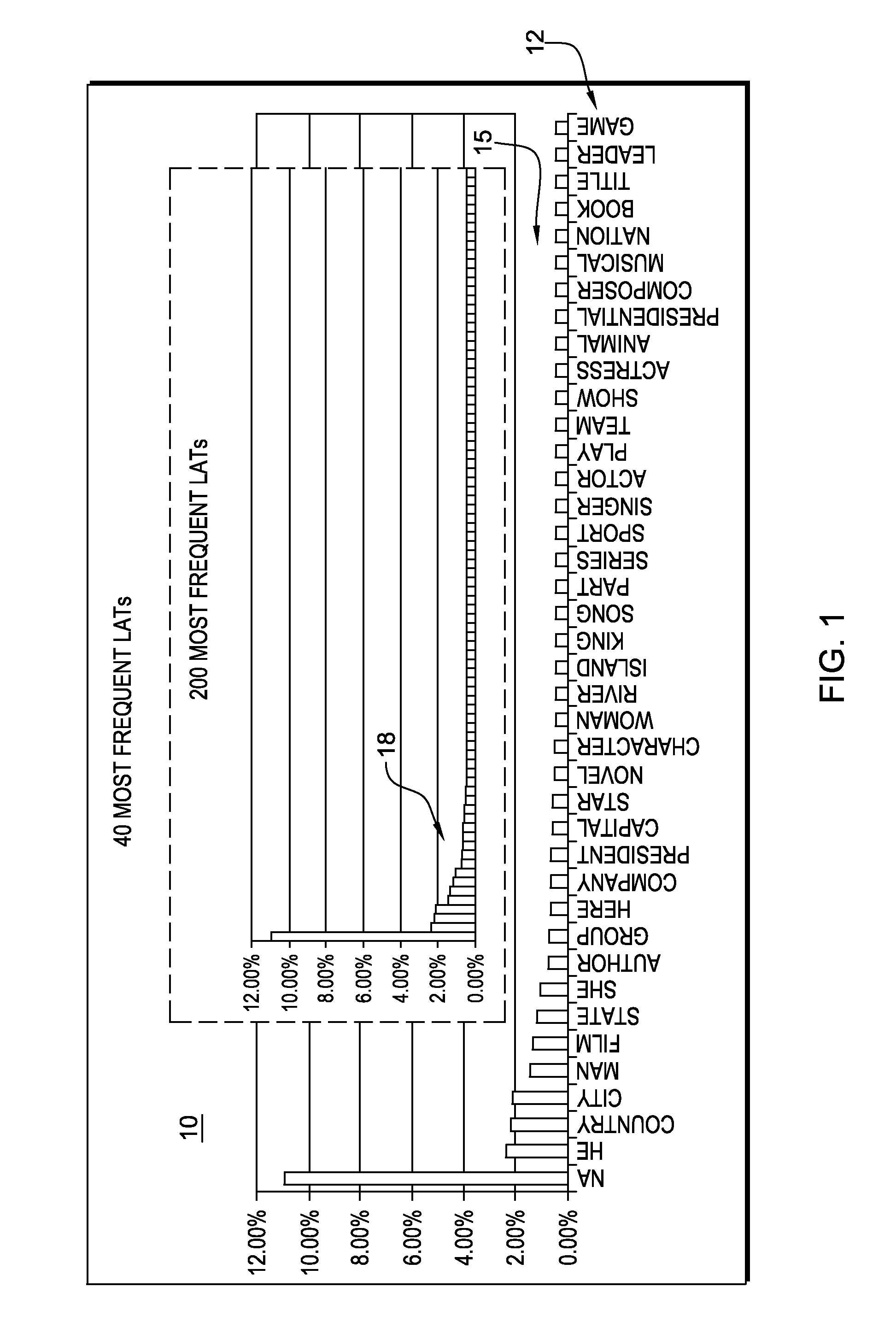Predicting lexical answer types in open domain question and answering (QA) systems
a technology of open domain question and answer system and lexical answer type, applied in the field of information retrieval system, can solve the problems of limited lexical type solution, and insufficient open domain question answering
- Summary
- Abstract
- Description
- Claims
- Application Information
AI Technical Summary
Benefits of technology
Problems solved by technology
Method used
Image
Examples
Embodiment Construction
[0025]As referred to herein, a lexical answer type, or “LAT”, is a word in or a word inferred from the clue (e.g., question) that indicates the type of the answer, independent of assigning semantics to that word. For example, in the clue “ . . . Invented in the 1500s to speed up the game, this maneuver involves two pieces of the same color . . . ”, the LAT is the string “maneuver”. Determining whether or not a candidate answer can be considered an instance of the LAT is an important kind of scoring and a common source of critical errors. In an embodiment of the present invention, this capability is implemented by a component called TyCor (short for Type Coersion) scoring, whose goal is to estimate the extent to which an entity can be coerced into (or matched with) a specific LAT. Functionally, TyCor scoring takes as input any two English terms (the first representing the LAT, the second being the answer candidate) and returns a numeric value.
[0026]In a QA system, such as described b...
PUM
 Login to View More
Login to View More Abstract
Description
Claims
Application Information
 Login to View More
Login to View More - R&D
- Intellectual Property
- Life Sciences
- Materials
- Tech Scout
- Unparalleled Data Quality
- Higher Quality Content
- 60% Fewer Hallucinations
Browse by: Latest US Patents, China's latest patents, Technical Efficacy Thesaurus, Application Domain, Technology Topic, Popular Technical Reports.
© 2025 PatSnap. All rights reserved.Legal|Privacy policy|Modern Slavery Act Transparency Statement|Sitemap|About US| Contact US: help@patsnap.com



